
Vastly improved range, faster speeds, extended advertisements, direction-finding, and LE Audio support: there’s plenty packed into the latest versions of Bluetooth® Low Energy wireless communication specification.
With each new version since its launch in 2010, Bluetooth Low Energy has become more capable and richer with features. However, as we move from the smartphone age into the IoT age, Bluetooth needed to make a significant leap forward to keep pace.
With Bluetooth 5, 5.1, and 5.2, that is exactly what’s happened. The primary benefits of Bluetooth 5 are improved speed, extended range, and advertisement enhancements. The 5.1 specification launch adds Direction Finding, another big step forward for the Bluetooth and IoT partnership. Moreover, Bluetooth 5.2 introduced features for improved power consumption, coexistence, a game-changing feature for natively supporting audio over Bluetooth Low Energy (LE Audio), and laid the foundation for new use cases such as multi-stream audio and broadcast for audio sharing.
Keep scrolling to explore our complete guide to Bluetooth Low Energy!
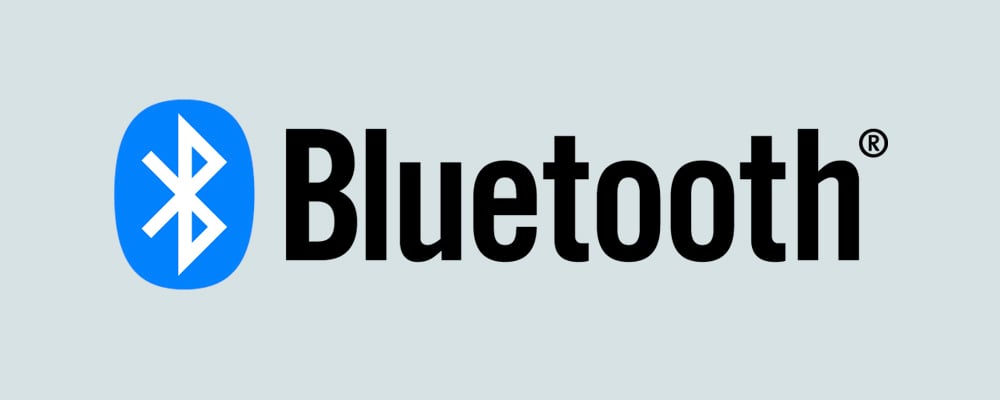
The Bluetooth core specification developed and maintained by the Bluetooth Special Interest Group (Bluetooth SIG) contains two distinct architectures of Bluetooth. These two architectures are Bluetooth Low Energy (Bluetooth LE) and Bluetooth Classic. This whole article focuses on Bluetooth Low Energy. Bluetooth LE is taking the lead in the IoT domain as it offers unprecedented flexibility in balancing power consumption, throughput, and range. Besides, it supports multiple network topologies, including point-to-point, broadcast, and mesh networking.
Read more: The Difference Between Classic Bluetooth and Bluetooth Low Energy

The Bluetooth SIG estimates 48 billion connected devices in 2021, with 30% of those being Bluetooth-enabled. Bluetooth 5 was designed to give more reliable connections, improved range, speed and increased versatility to cope with this ever-increasing number of connected devices.
Bluetooth 5 has a potential throughput of up to 1.4 Mbps, close to double to what was possible in 4.2. It also offers at least 5x the throughput compared to the original 4.0 spec.
Bluetooth 5 also introduced Bluetooth Long Range feature which promises an improved theoretical range of up to 4x at the expense of a reduced throughput and increased average power consumption.
The exact improvements will depend on individual devices from semiconductor vendors and their software to maximise this potential. It may take some time for the speed improvements to make a real impact, as improved hardware will take time to reach the market. Most of the new features are optional, so an SoC can support Bluetooth 5 without supporting any of the new features, therefore, take care when choosing a chipset (aka SoC), assess well if you want to support higher speeds, extended range, advertising extensions or any other features.
Read more: Nordic SoCs that support Bluetooth 5, 5.1, and 5.2
Given the wide use of Bluetooth technologies in audio and personal equipment, many people mistakenly think that the maximum range of Bluetooth is somewhere around a few meters. The reality extends that by far. With Bluetooth Long Range feature, devices can communicate over a longer distance. This was achieved through the adoption of Forward Error Correction (FEC) techniques which significantly improves the device’s RF sensitivity.
For instance, Nordic SoC’s gives you the absolute freedom to pick the range that best fits your use case and application needs, from less than a meter to more than a kilometer. You have complete control of all the parameters affecting range, enabling you to manage effective range, data transfer rate, and power consumption.
Check this video where Nordic Semiconductor engineers field-test the effective range of Bluetooth Low Energy, using two nRF52840 DKs.
It’s worth noting that it’s feasible to go even beyond the typical 2.4GHz RF direct range discussed above using Range Extenders,
also known as RF Front End Modules (FEM).
Read more: Tested by Nordic: Bluetooth Long Range
Read more: Things You Should Know About Bluetooth Range
It is possible to achieve around 1.4 Mbps application-level data throughput using the Bluetooth High Throughput 2Mbps feature. Check this Nordic Semiconductor video for a full open-source demo illustrating how Nordic SoCs enable high data throughput.
Keep in mind that the application-level data throughput achieved with Bluetooth Low Energy depends on several parameters, including the peer device hardware and software specifications.
Watch our free webinar to learn more about Bluetooth Low Energy technology: Introduction to Bluetooth Low Energy
Devices use advertisements to broadcast data and information that observer devices can discover and process. Consequently, information can be broadcast to multiple devices simultaneously, as opposed to connected Bluetooth devices, which only allow peer-to-peer communication.
By adding plenty more of capacity to advertising packets, the latest versions of Bluetooth Low Energy aim to accelerate the deployment of beacons and location-based services to users worldwide.
Watch our free webinar on Bluetooth LE advertising:
Advertising extensions provide a way to offload advertising data from the three traditional advertising channels to the complete set of data channels for more frequency diversity. A more efficient use of the 2.4GHz band should enable developers to increase advertised packets’ rate and utilize the new PHY modes, paving the way for better streaming and beacon solutions.
Previously, three channels handled all Bluetooth advertising. From Bluetooth 5 this mechanism was extended. Now, it is possible to have a small header packet sent on the three primary advertising channels points to a larger payload sent later on one of the 37 data channels. This removes the need to duplicate the data payload on all three advertising channels while allowing considerably more advertising data in the area before running into coexistence issues.
Read more: Advertising Extensions in Bluetooth 5

The trade-off with Bluetooth LE is that you can achieve double speed or four times the range, but not both at the same time. Transmitting loads of data over large distances requires a lot of power. Longer airtime will yield longer average power consumption, so other technologies might be better suited for that purpose.
You may also need to reconsider your plan for powering the device. That said, Bluetooth 5 does remain a low-energy choice. The peak power doesn’t increase for long-range transmission, while at high speed, the job takes less time and uses less power. Many potential applications of Bluetooth 5 can be achieved with similar battery choices to those made today.
Read more: The Bluetooth 5 Trade-Off
Direction finding capability is the primary feature of the Bluetooth 5.1 specification, introduced back in 2019. The Bluetooth SIG predicts 400 million Bluetooth location services products per annum by 2022.
It has been designed to enhance location services beyond signal strength-based technology (aka: RSSI). The new capabilities offer new and improved use cases for real-time asset tracking in a wide range of commercial applications, from logistics and warehousing to security in hospitals and factories. There is also the potential for improving the user-experience based on proximity, such as in retail environments.
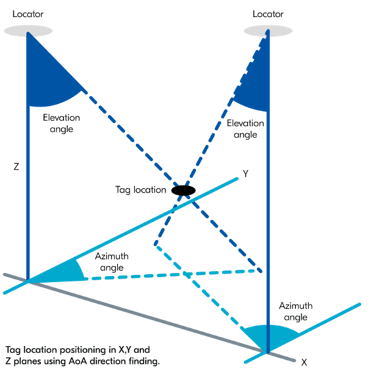
Bluetooth Direction Finding can be used to detect location in either 2D or 3D, depending on its implementation complexity. It’s based around the two key concepts of Angle of Arrival (AoA) and Angle of Departure (AoD), which make use of the angular phase-shifts that occur between antennas as they receive or transmit radio signals.
Read more: Finding your way with Bluetooth
Bluetooth 5.2 was announced on the 31st of December 2019 and introduced vital features for:
Now, let’s look at these features one by one.
This feature enables devices to dynamically optimize the transmission power used in communication between connected devices.
There is always an optimal signal strength range in wireless communications, (known as the golden range). Values outside this range will cause issues such as packets retransmitting, amplifier saturation, wasted power, and connection dropouts, to name a few.
With LE Power Control, it is possible to feedback the signal strength to the transmitter (TX). A receiver (RX) may now request transmission power-level changes in connected devices, to maintain an optimal signal strength from the perspective of signal quality and low-power use.
This optional feature is only beneficial for devices using Bluetooth Low Energy in connection mode and can only work if both devices support it.
The Enhanced Attribute Protocol (EATT) feature is an optional version of the Attribute Protocol (ATT) that supports concurrent transactions.
This feature provides a way to perform concurrent transactions between applications and a Bluetooth Low Energy stack, hence, improving the user experience (reducing latency) in cases where multiple applications are running on the same Bluetooth Low Energy stack.
This was achieved by separating the L2CAP layer Maximum Transmission Unit (MTU) from the Attribute layer’s MTU, and allowing the interleaving of L2CAP packets relating to ATT packets from different applications.
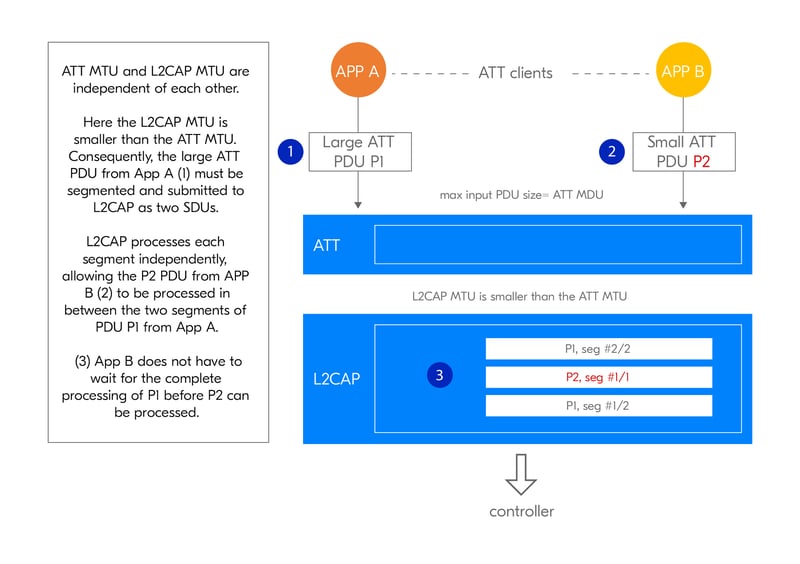
With EATT feature, application B doesn’t have to wait for application A to finish its ATT transactions. Packets of application B can be interleaved with packets of application A. End-to-end latency associated with application B is improved. Source: Bluetooth SIG
The EATT optional feature is only beneficial for devices that use Bluetooth Low Energy in connection mode. It can only work if both devices support it, and it may only be used over an encrypted connection.
This game-changing feature lays the foundation of supporting audio natively using Bluetooth Low Energy. New wireless audio use cases and topologies are now made possible by the Isochronous Channels (ISOC) feature.
The Isochronous Channels feature enables multi-stream true synchronous audio for earbuds. It defines a separate channel (stream) for each earbud (Connected Isochronous Stream) and synchronizes them by grouping them into one group (Connected Isochronous Group).
%20scheme.png?width=1072&name=BT%20Connected%20Isochronus%20Group%20(CIG)%20scheme.png)
Before this feature, Bluetooth audio data was sent to only one earbud. It was up to the earbud’s manufacturer to customize synchronization with the other earbud (single stream).
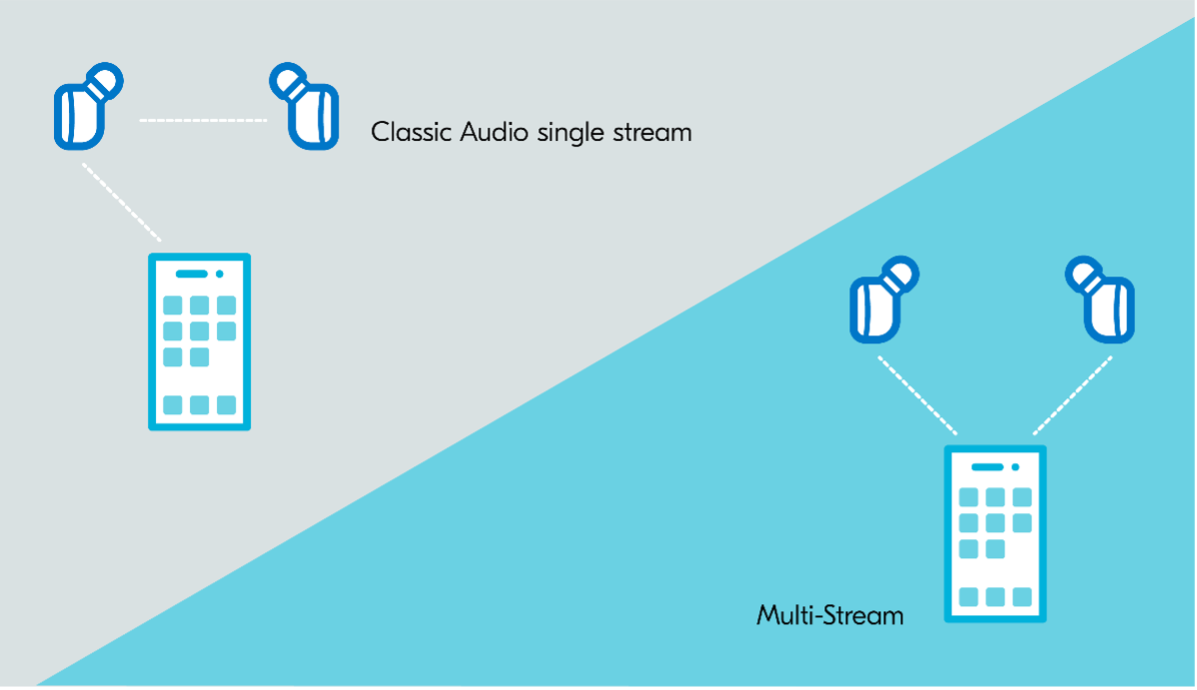
The Isochronous Channels (ISOC) feature also enables one device to broadcast audio to multiple devices. Imagine your TV or smartphone broadcasting to various pairs of earbuds or headsets.
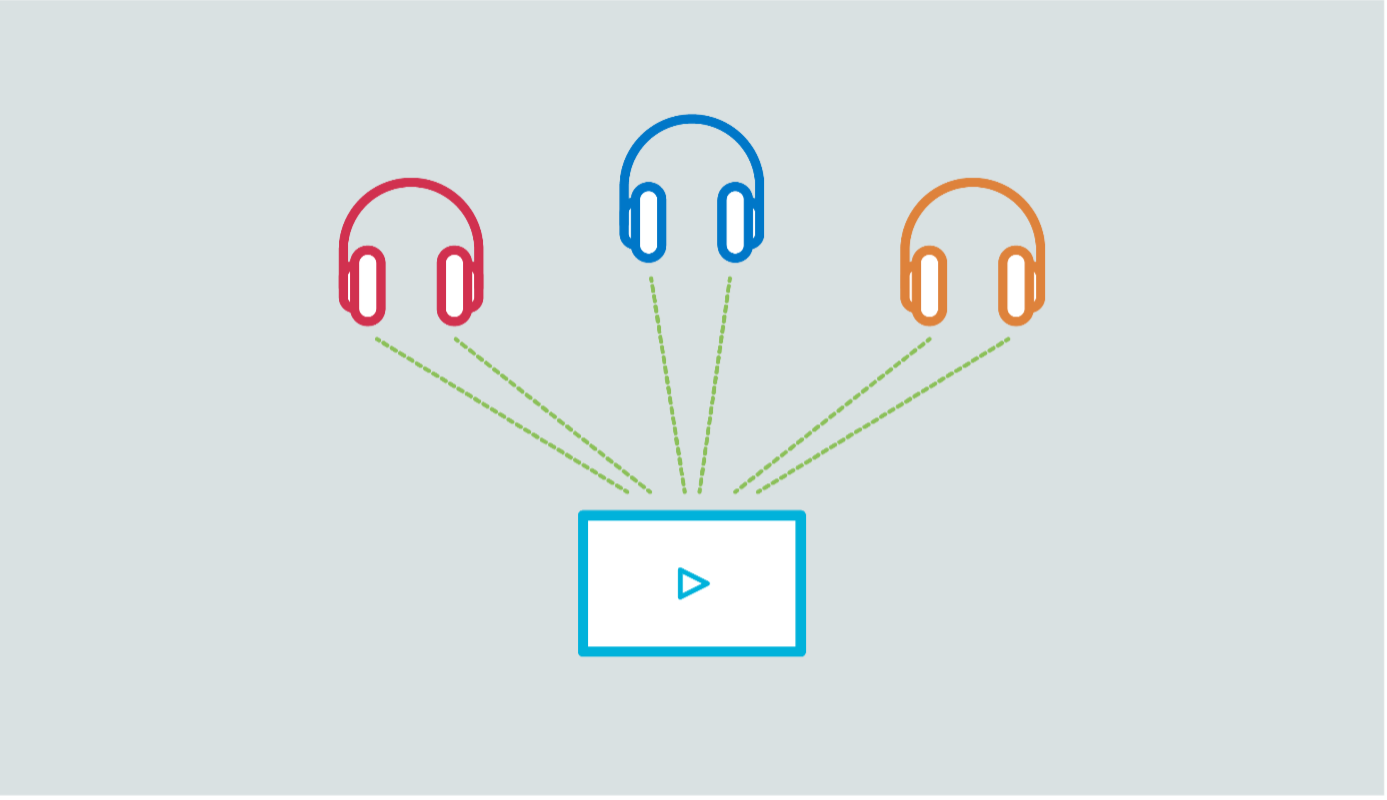
With broadcast, the number of receiving devices is theoretically unlimited, which opens the doors for new use cases in public locations such as conferences and airports.

The ISOC optional feature is beneficial for Bluetooth Low Energy devices in connection mode and connection-less (Broadcast).

LE Audio is the latest in the Bluetooth audio technology. It finally standardizes audio over the low power and low bandwidth Bluetooth LE radio. LE Audio will change the way we experience audio forever as it promises the following:
In addition to the ISOC, the Low Complexity Communications audio codec (LC3) is an essential feature closely related to LE Audio. The audio codec facilitates compressing the raw audio data so that it can be sent efficiently over the air while maintaining high quality and - fidelity.
This online tool by Bluetooth SIG allows listening to and evaluating LC3-compressed audio and comparing it with other standard audio codecs. The LC3 will also make headset batteries last longer as less data is sent over the radio. New use cases based on LE Audio will soon emerge, such as audio sharing, audio broadcast and a new generation of hearing aids.
Our nRF5340 SoC is the world’s first dual Arm® Cortex®-M33 wireless SoC. It is engineered from the ground up to meet all the requirements for Bluetooth LE Audio applications. With our LE Audio-enabled software stack, the nRF5340 radio supports ISOC. The LC3 codec can run efficiently on the nRF5340. Its I2S and PDM audio interfaces with low-jitter audio PLL clock source can easily transfer this data to other parts of the system like AD/DA converters, speakers, and microphones.
Read more: One step closer to Bluetooth LE Audio
Read more: Exciting features in the new LE Audio Bluetooth standard
Read more: The evolution of Bluetooth audio
Read more: LE Audio unveiled as the next generation of Bluetooth audio, and Nordic will be a key player

The latest Bluetooth Low Energy features promise complete home and building coverage, along with entirely new use cases in industrial, commercial, and outdoor situations. IoT developers have already produced some intriguing solutions based on the new specifications.
Here are just a few of the many potential application areas:
With the big increase in broadcast capability through the Bluetooth Advertising Extension feature, Bluetooth beacons can send more information with every broadcast. They no longer have to rely on sending only a URL to a user’s device, as they can include much more information in the broadcast message. Consequently, the user won’t need an internet connection to benefit.
Mark Powell, executive director of the Bluetooth SIG said that Bluetooth 5 is “mobilizing the adoption of beacons, which in turn will decrease connection barriers and enable a seamless IoT experience.”
Read more: Bluetooth LE beacons pinpoint a single car amongst thousands
With Bluetooth Direction Finding, the possibility of absolute positioning of products and things in three-dimensional space, with low power wireless, is real. It’s a significant addition to Bluetooth Low Energy’s capability arsenal. We believe it can have a similar impact on indoor locations as GPS had on outdoor positioning.
On the macroscale, GPS has fundamentally changed the world of travelling and tracking for cars, people and objects. Bluetooth Direction Finding may have a similar impact on the microscale inside buildings and properties. Besides, Bluetooth Direction Finding will offer new and improved use cases for real-time locating systems (RTLS) for asset tracking in a wide range of applications, from logistics and warehousing to value-asset security in hospitals and factories.
The Bluetooth Special Interest Group (SIG) predicts 431 million Bluetooth location services products per annum by 2023. Quuppa, a pioneer in location services, mainly uses the Angle of Arrival (AoA) method of the Bluetooth Direction Finding feature to offer complete RTLS solutions for a wide range of applications. In Quuppa’s home market Finland, this technology can be found in all major national league ice hockey stadiums, providing real-time information on puck location and detailed data on player positioning for later analysis. 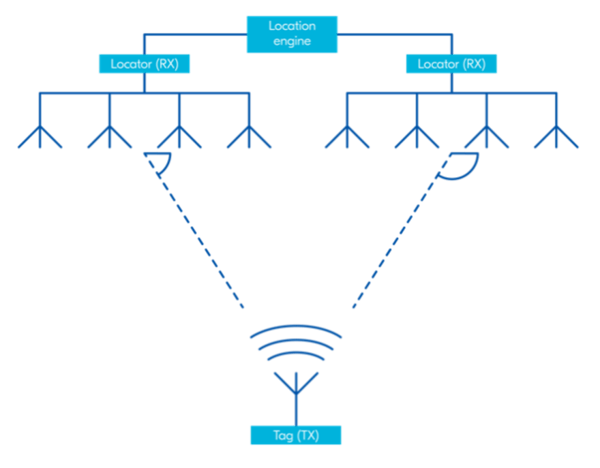 Quuppa delivers the fixed locators that determine the direction of the signal from the tags with accompanying software, such as the Quuppa Positioning Engine, and everything else needed to plan, deploy, configure and simulate the system.
Quuppa delivers the fixed locators that determine the direction of the signal from the tags with accompanying software, such as the Quuppa Positioning Engine, and everything else needed to plan, deploy, configure and simulate the system.
Quuppa relies on tag partners to provide tags matching all the various application requirements their customers may have. To be compatible with the system, the tag partners integrate firmware provided by Quuppa. Firmware is available for Nordic's SoCs, upon which most tag partners prefer to base their tag design.
Read more: Quuppa’s Direction Finding Experience Comes to Bluetooth
The latest iteration of Bluetooth should ensure that toys that have delighted kids and adults alike for generations can keep pace with modern trends. Standardization is the first obvious advantage. Any Bluetooth car, boat or drone can be controlled by any Bluetooth standards compliant smartphone or controller.
The increased range through the Bluetooth Long Range feature is also a great advantage. Even though most hobbyists won’t want to be more than 200m away from their toys, being able to do so reliably and not worrying about losing a connection could allow long and more exciting racecourses for toy cars, for example.
Among other benefits, Bluetooth can make it easier for vehicles to give users valuable, real-time feedback about their condition, permitting collision detection and avoidance to drones.
Read more: Bluetooth 5 for Remote Controlled Toys
Whether it is an activity tracker, a sports watch, a smart scale or bike equipment, Bluetooth dominates the sports and fitness equipment market. From activity trackers that continuously assess our physical activity and exercise goals to sports watches with increasing computational powers.
Bluetooth Low Energy is ideal for this equipment as it provides an ultra-low power communication channel to our smartphones. Furthermore, integrating location and movement sensors with wireless technology in sports equipment is revolutionising the way athletic performance can be monitored, analysed, and improved.
Today’s connectivity SoCs need to be very capable of meeting the modern sports equipment needs, with outstanding energy efficiency, rich peripheral sets, and compute power topping the list, with competition as an integral part of how they are used.
Read more: Sports equipment that tracks individual performance is changing the game for athletes and coaches
Smart locks gain a lot of popularity as they allow users to wirelessly control, share, and monitor their locks on a companion smartphone app, eliminating door keys and replacing the door lock when keys are lost or stolen.
When building their future-proof smart locks, many leading manufacturers rely on the best-in-class hardware and software security features in the nRF52® and nRF53® Series connectivity SoCs. Advanced security features are embedded in Nordic Semiconductor's SoCs, such as the Arm CryptoCell supporting many FIPS-compliant cryptographic algorithms, like AES-256 encryption.
Read more: Poly-Control Aps employs nRF52832 to create retrofit smart door lock
Bluetooth Low Energy technologies are being heavily adopted in the healthcare industry. Various health measurement equipment, such as blood pressure monitors and blood glucose monitors, no longer use displays and interface peripherals. Instead, they rely on Bluetooth Low Energy to provide an ultra-low power communication channel to our smartphones. Consequently, health measurement equipment gets smaller, and batteries last much longer than their non-Bluetooth LE-connected predecessors. Besides, sending the measurement to a smartphone enables logging and advanced data processing.
Check CLIPSULIN, which connects to most insulin pens, retrieves information related to insulin injections and transmits it via Bluetooth/NFC to a secure digital self-monitoring log-book on a smartphone. The CLIPSULIN uses Nordic popular nRF52832 SoC as its wireless connectivity chip.
Bluetooth LE plays a significant role in the battle against the COVID-19 Pandemic. Governments and large-scale institutes worldwide use Bluetooth LE technologies in smartphones and wearables in the form of badges, ID holders, bracelets and watches to promptly notify people who have been in close contact with someone diagnosed with the COVID-19 virus.
Also contributing to fighting the global pandemic, are the home test kits. The Ellume COVID-19 Home Test kit, which is powered by Nordic nRF52810 SoC, includes a sterile nasal swab, a dropper, processing fluid, and a Bluetooth-connected analyzer for use with an app on the user’s smartphone. Utilizing the dedicated app, the user follows step-by-step instructions to perform the test, including a self-collected mid-turbinate swab. The sample is analysed, and results are automatically transmitted to the user’s smartphone via Bluetooth. Results can also be shared with healthcare professionals to enable optimal therapy.
Watch our panel debate video:
How Covid-19 has impacted the IoT and IoT business from Nordic’s perspective